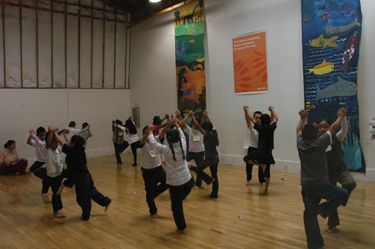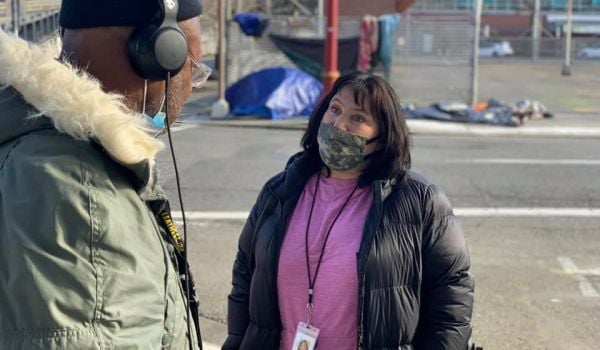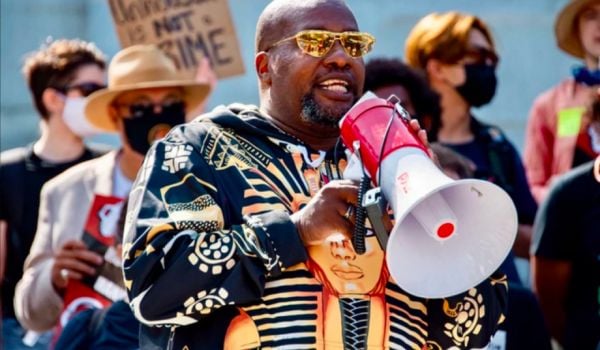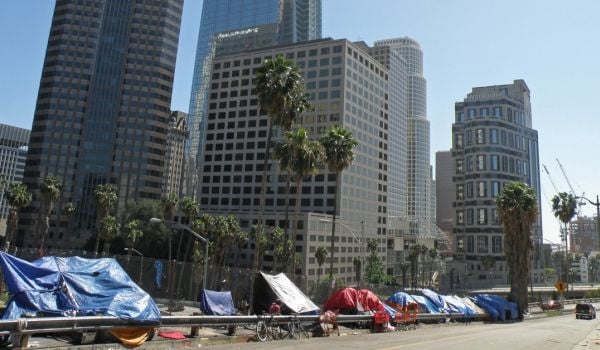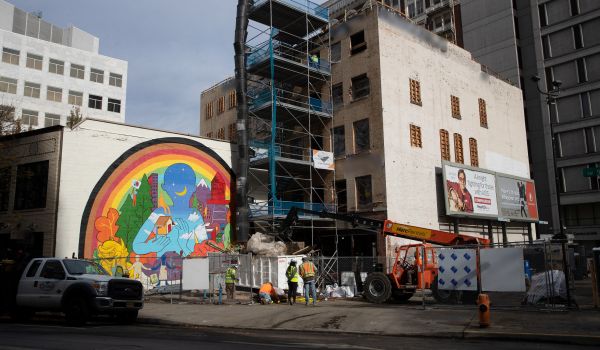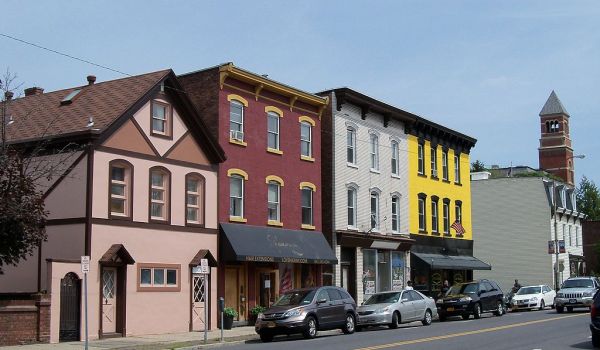The Rudy Bruner Awards honor well-designed urban spaces, the ones that create solutions to urban problems. The award is given out every two years and recognizes places that embody good planning and good design. Bruner Award winners have given back meaningfully to the community by creating social places for people to gather, by enhancing the economic life of the city and by rescuing and reusing the urban environment. Award winners have been as diverse as Times Square in New York City, Yerba Buena Gardens in San Francisco, and the Maya Angelou Community Initiative of low income housing in Portland, Or.
The Rudy Bruner Award committee selects a Gold Medal winner who receives $50,000 and four Silver Medals winners who win $10,000 each. You can check out case studies about winning projects online here.
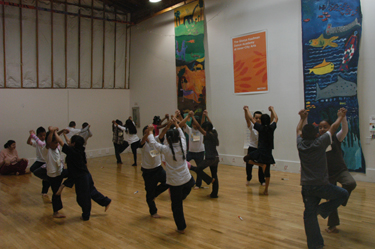
Programming at Inner-City Arts.
This year’s Gold Medal winner, Inner-City Arts, is an arts education center located in the Skid Row Area of Los Angeles. They work with about 8,000 elementary school students per year, most from low-income families. Inner City Arts provides them with high quality arts classes in visual arts, dance, drama, animation, music, and ceramics. They just completed an expanded facility complete with a ceramics studio, a black theater and a library. I caught up with president and CEO Cynthia Harnisch to talk about the project.
NAC: What has the reaction been to the new Inner City Arts campus?
Cynthia Harnisch: The community has embraced the new campus. Inner-City Arts has a stake in the healthy development and growth of our Skid Row community and its most precious resource—the children. The campus reflects our values and firm belief that good ideas and people come from Skid Row and thus are worthy of such a campus. Located in the homeless capital of America, the community was truly proud of our campus. During the entire construction period we had no graffiti. Members of our homeless population often assisted staff walking across the street and expressed their joy with the project. They are also protective of the new campus. With its pristine white exterior, we are graffiti-free to this day. In addition, the Mayor and other city officials are proud of this gift to the City on behalf of the children, and to our local Downtown businesses and the Improvement Districts.
How has having the Inner City Arts project in Skid Row changed that community? What were the economic and social impacts?
Inner-City Arts is now recognized as a beacon of hope in downtown Los Angeles. With our new campus we provide a safe haven for the children of Skid Row. Additionally, Inner-City Arts Campus demonstrates to city leaders the enormous potential for community development within a depressed urban community through the creation of cultural facilities geared toward children. With our completed campus, one of downtown’s most depressed areas is now transformed, drawing the bleak Industrial District into the Architectural Renaissance of the downtown area. We have created a learning environment that is sensitive to the needs of children and effective in enhancing the ability of educators and artists to effect positive change in the lives of at-risk children and youth. Arts programs to be broadened through our expansion will engage the creative potential of children in positive ways that not only assure their healthy development, but also enrich community life.
Did Inner City Arts end up with unexpected uses…ones that you didn’t foresee? Any serendipity?
What was most unexpected was the sheer impact of the beauty and dignity of the buildings. The exquisite beauty of the space and the sense of tranquility and splendor it brings to our staff, volunteers, donors and the children we serve. We cannot overestimate the nurturing element the architecture and surrounding gardens bring to all who visit the campus. We have created a sanctuary for the children of our community, our garden brings humming birds, butterflies and ladybugs – truly an unexpected sight in Skid Row. In addition, more and more people from outside our primary target population want to learn about arts and creativity on the campus, so we are planning to offer fee-based art classes, enabling us to level the learning field – cutting across socioeconomic barriers.
Were there any disappointments? If so, what?
With our expanded campus we will more than double our capacity and serve more than 16,000 children and families each year. Our only disappointment is the timetable for our programmatic growth will be a bit slower due to the current economic conditions. While we are expanding our current programs, we will not be able to quickly double our capacity with programs and staff.
How was the community involved in creating the space? How was the city involved?
True to our values and mission, the children had a great voice and input in the design. At the beginning of the design process, Inner-City Arts co-founder Bob Bates asked the children to draw images of their vision for the new campus. They drew palms, oranges, and other fruit trees. The boys also drew volcanoes, which inspired the children’s fountain, and our first ceramics tower. These children’s drawings gave garden designer Nancy Power many of her ideas for the plaza. Additionally we held focus groups with key community, civic and education stakeholders. The city also provided important funding for the project.
Is there a lesson here for other cities? Do you think that a Inner City Arts-type project in could be created in other places?
Inner-City Arts is a model for community development in an urban area. Not only does our campus provide a safe environment to enhance creativity, it provides learning activities that are vital to the healthy development of children, contributing to their academic achievement and to their future success as productive citizens. Yes, Inner-City Arts is a unique project that can be created in other places through the dedicated efforts of those focused on investment of the development of our youth.
How are you going to use the Bruner Award?
The $50,000 we will receive is in the form of unrestricted funds. In this economic climate, that is a true financial gift. We will use the money for a variety of purposes – art supplies for the children, to keep the lights on, day-to-day operational costs – all to support our mission of serving the children.

